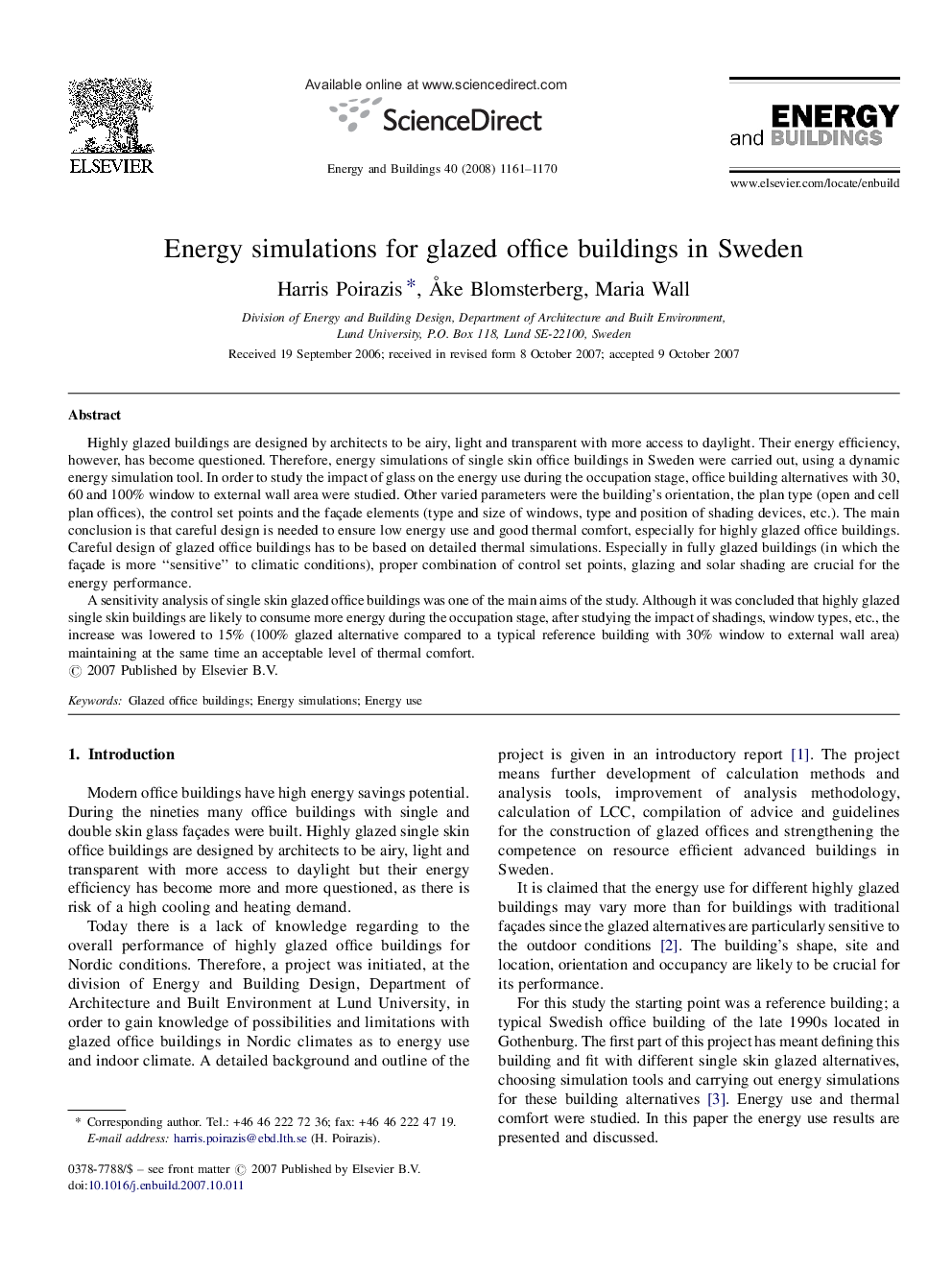| Article ID | Journal | Published Year | Pages | File Type |
|---|---|---|---|---|
| 264684 | Energy and Buildings | 2008 | 10 Pages |
Highly glazed buildings are designed by architects to be airy, light and transparent with more access to daylight. Their energy efficiency, however, has become questioned. Therefore, energy simulations of single skin office buildings in Sweden were carried out, using a dynamic energy simulation tool. In order to study the impact of glass on the energy use during the occupation stage, office building alternatives with 30, 60 and 100% window to external wall area were studied. Other varied parameters were the building's orientation, the plan type (open and cell plan offices), the control set points and the façade elements (type and size of windows, type and position of shading devices, etc.). The main conclusion is that careful design is needed to ensure low energy use and good thermal comfort, especially for highly glazed office buildings. Careful design of glazed office buildings has to be based on detailed thermal simulations. Especially in fully glazed buildings (in which the façade is more “sensitive” to climatic conditions), proper combination of control set points, glazing and solar shading are crucial for the energy performance.A sensitivity analysis of single skin glazed office buildings was one of the main aims of the study. Although it was concluded that highly glazed single skin buildings are likely to consume more energy during the occupation stage, after studying the impact of shadings, window types, etc., the increase was lowered to 15% (100% glazed alternative compared to a typical reference building with 30% window to external wall area) maintaining at the same time an acceptable level of thermal comfort.
